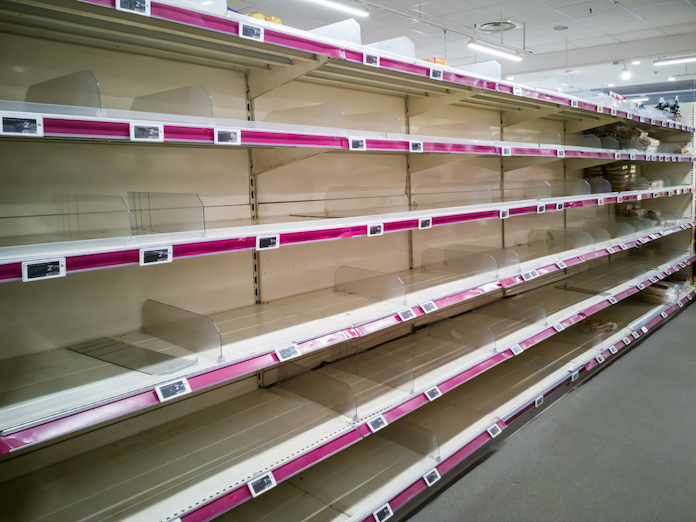If you have read the news at all lately, you’ve likely been seeing some grim headlines about massive supply chain issues hitting consumers. Certainly, this supply chain crisis threatens to be a major headache for both shoppers and retailers. Even just casual observers of the news would have heard murmurs about this problem, but that doesn’t mean that it’s clear to everyone just what is going on. If you’ve felt confused about what is going on with the supply chain crisis, we’ve compiled here some clear cut, easy to understand answers, as well as advice on what you can do for yourself to make sure you don’t get stuck in the lurch. Like so many problems out there, preparation is a big part of making sure you have everything you need to meet the coming challenge.
How Did This All Get Started?
In figuring out how this problem got started, you only have to look back to the beginning of the pandemic. This supply chain scarcity is an issue that was years in the making, more specifically being traced to late 2019, when the coronavirus was just beginning to make news. The pandemic hit certain cities particularly hard, and areas like Taiwan, China and South Korea—where so much of the world’s retail goods are manufactured—were particularly affected [1]. As the shutdowns began, factories were unable to produce the goods they typically put out, meaning the consumer was left with little to choose from. Add to that a fear factor that saw many people aiming to stock up in bulk on certain items, and you’re left with empty shelves and stores unable to meet shoppers’ demands. This has been going on for two years now, and there is no real end yet in sight.
Just How Will It Affect Individuals?
Understanding how this problem got started is all well and good, but many people are going to be most interested in knowing how this crisis is going to negatively affect them on a personal level. One such way was outlined in the previous paragraph—there are going to be times when certain products are incredibly hard to find, leading to much frustration. And as scarcity of an item becomes more common, prices on those products are going to naturally go up. Add to that the problem of price gouging, where retailers upcharge their goods to an unfair slant, and people hoarding items just to resell them at shocking prices online, and you’ve got a recipe for disaster when it comes to retail shopping. This problem has even extended to items like lumber and construction materials, negatively affecting many areas of the consumer’s life. This problem has led to a lot of the online chatter and news reporting on the subject.
What Is Being Done To Solve The Problem?
Fortunately there are many things currently being done to right this ship. When it comes to price gouging, oversight committees are cracking down on retailers that take part in this shady practice, helping ensure that individuals seeking to profit off the pandemic will be penalized. Tech companies are also producing new algorithms to help manufacturers more closely anticipate consumer needs, so energy is put into producing exactly what is needed to meet demand. And upping delivery capabilities is a big part of the solution. As more and more people look online for their shopping needs, delivery capacity fell drastically short in 2020. This is an area that companies began to look closely at, and new routes, new trucks, and new delivery techniques have helped to ease some of that ache [2]. Still there is a long way to go, and the best way to make sure the supply chain crisis ends as quickly as possible is to get the world healthy and working again. As covid cases go down and healthcare treatments become more effective, we should see much of the problem get under control.
How Can You Help Yourself?
As companies, governments and manufacturers seek new ways to help solve this crisis, there is still plenty you can do on a micro level to help yourself out. Certainly, shopping early is a big part of that. For example, many manufacturers have put out big campaigns encouraging people to get their holiday shopping done early. Shopping local is also a great idea, as looking to local shops that produce their own goods on a smaller level will likely mean you can find the items you seek, as well as put money back into your own neighborhood. And just staying aware of what’s going on can be a big help, as education on the problem will typically mean you take in just what you need, produce less waste, and encourage others to do the same. It can sometimes feel like there’s nothing you can do yourself when it comes to a global problem, but that’s just not the case.
Understanding The Problem, And Moving Forward
So now you likely have a better understanding of what the supply chain crisis actually is, how it got started, and what’s being done to correct it. With its original roots in the pandemic, the scarcity of goods has negatively affected consumers with empty shelves and higher prices on items they typically buy. But with some deep digging from governments, corporations and manufacturers, the tide can eventually turn. Also, as the pandemic gets more and more under control, consumers should feel confident that the supply chain crisis will die down. Just keep in mind to shop early for the products you need, and have an eye toward preparation. Encouraging others to do the same will also help. By working together, retailers and shoppers can get back to a point where the issue of supply and demand isn’t such a daily problem.
Sources:
